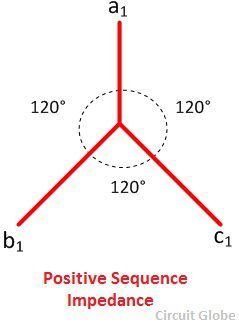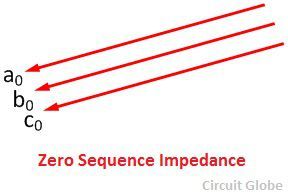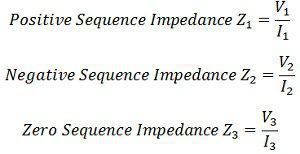The sequence impedance of the network describes the behaviour of the system under asymmetrical fault conditions. The performance of the system determines by calculating the impedance offered by the different element of the power system to the flow of the different phase sequence component of the current. Every power system component (static or rotating) has three values of impedance one for each symmetrical value of current.The sequence impedance of power system is of three types namely positive sequence impedance, negative sequence impedance and zero sequence impedance.
Positive Sequence Impedance – The impedance offered by the network to the flow of positive sequence current is called the positive sequence impedance. The positive sequence means all the electrical quantities are numerically equal and displaces each other by 120º.
Negative Sequence Impedance – The negative sequence impedance means the impedance offered by the network to the flows of negative sequence current.
Zero Sequence Impedance – The impedance offered to zero sequence current is called the zero sequence impedance.
The impedance of the positive, negative and zero sequence component is given by the ratio of the phase sequence voltage to the phase sequence current of the system.
There is no mutual impedance between various symmetrical components. The each sequence impedance considered separately, which simplifies the calculation of asymmetrical fault calculations.





it’s so nice to read your topics
Great you guys cleared my concept about this keep it up ✅🙏